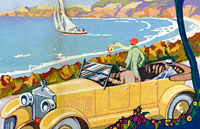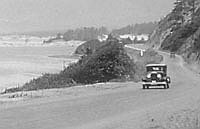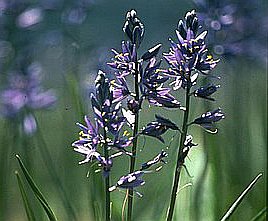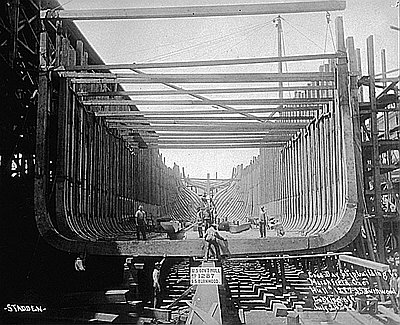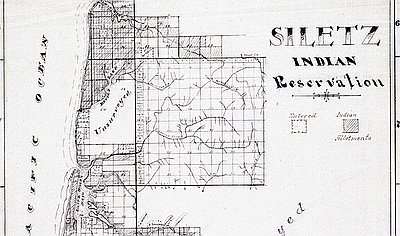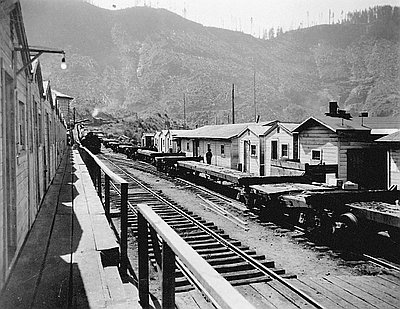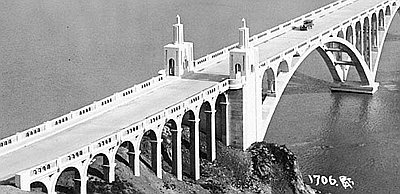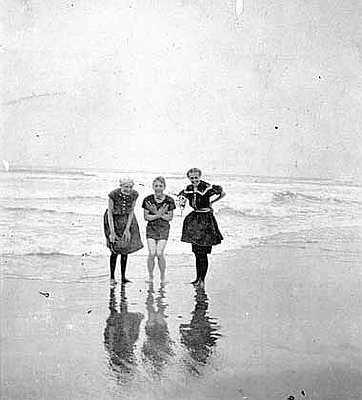Tourists Discover the Oregon Coast
Seaside and Newport were the earliest coastal towns to develop a tourist trade. In 1866 Samuel Case and Dr. J.R. Bayley built the Ocean House, Newport’s first resort hotel, at the south end of Front Street, today’s Bay Boulevard. At the other end of the street was a dock big enough for small schooners. Seaside’s first resort hotel was the Seaside House, built in the 1870s by railroad building magnate Ben Holladay.
Early visitors had to travel by water and stagecoach to reach their coastal destinations. The coming of the railroad made it easy to travel from Portland and the Willamette Valley to vacation spots in Seaside, Cannon Beach, and Newport. In 1885, the railroad was pushed through to Yaquina City, east of Newport on the upper bay. Tourists took the train from Corvallis and then boarded a ferry for the three-mile cruise to the Ocean House.
The first passenger train to the coast from Portland arrived in Seaside in May 1898. The 118-mile journey took four and a half hours. Soon there were two runs a day in the summer. The Saturday afternoon train out of Portland became known as the “daddy special,” because it allowed fathers to join their vacationing families for a brief weekend respite.
One ill-fated tourist attraction sprang up on Bayocean Spit, a strip of sand separating Tillamook Bay from the Pacific. In 1912, T.B. Potter, a San Francisco entrepreneur, realized his dream of building “the Atlantic City of the Pacific Coast.” His project included a forty-room hotel, a natatorium with an artificial wave-maker, and about a hundred houses. Five years later the jetty at the northern mouth of the bay was completed, causing a shift in the tidal currents. The spit, never stable to start with, began to erode. Severe winter storms in 1932 ate away at the spit, and several houses, the hotel, and the natatorium slid into the waves. By 1952 the spit’s narrow neck was breached, and Bayocean was an island. The last few residents were evacuated, and the final house disappeared in 1960.
The smaller hamlets between the railheads did not see very many visitors, nor did the communities along the rugged southern stretch, between the mouths of the Coquille and Chetco rivers. That all changed with the coming of the coastal highway, begun in the 1920s. When it was completed in 1936, U.S. 101 opened the whole coastline to outsiders, made transportation much easier for coastal residents, and positioned the towns of Bandon, Gold Beach, and Brookings to become the tourist destinations that they are today.
Also during the 1920s, Oregon began building its state parks program. The genial powerhouse behind the growth of Oregon’s parks was Samuel H. Boardman, the first state parks superintendent. During his twenty-one-year tenure, Boardman bought, traded, accepted as gifts, or otherwise acquired some fifty-five thousand acres of Oregon’s most scenic landscapes. He believed Oregon should snap up the land before they were developed and became too expensive.
Many of the new parklands lay along the Oregon coast, including twelve spectacularly beautiful miles between Pistol River and Cape Ferrelo in Curry County, now called the Samuel H. Boardman State Scenic Corridor. The town of Boardman, along the Columbia River on the east side of the state, is also named after him.
Oregon’s greatest spate of road-building and park-acquiring stretched from the end of World War I through the beginnings of recovery from the Great Depression. As more and more people were buying automobiles, there were more roads for them to travel on and more parks for them to visit. Car touring became a popular and increasingly affordable way to spend a family vacation. By the end of the 1930s, Oregon had dozens of state parks comprising thirty-two thousand acres and attracting 2 million visitors a year. Parks and roads set the stage for Oregon’s tourism-based economy, which today is the state’s third largest economic sector.
© Gail Wells, 2006.
